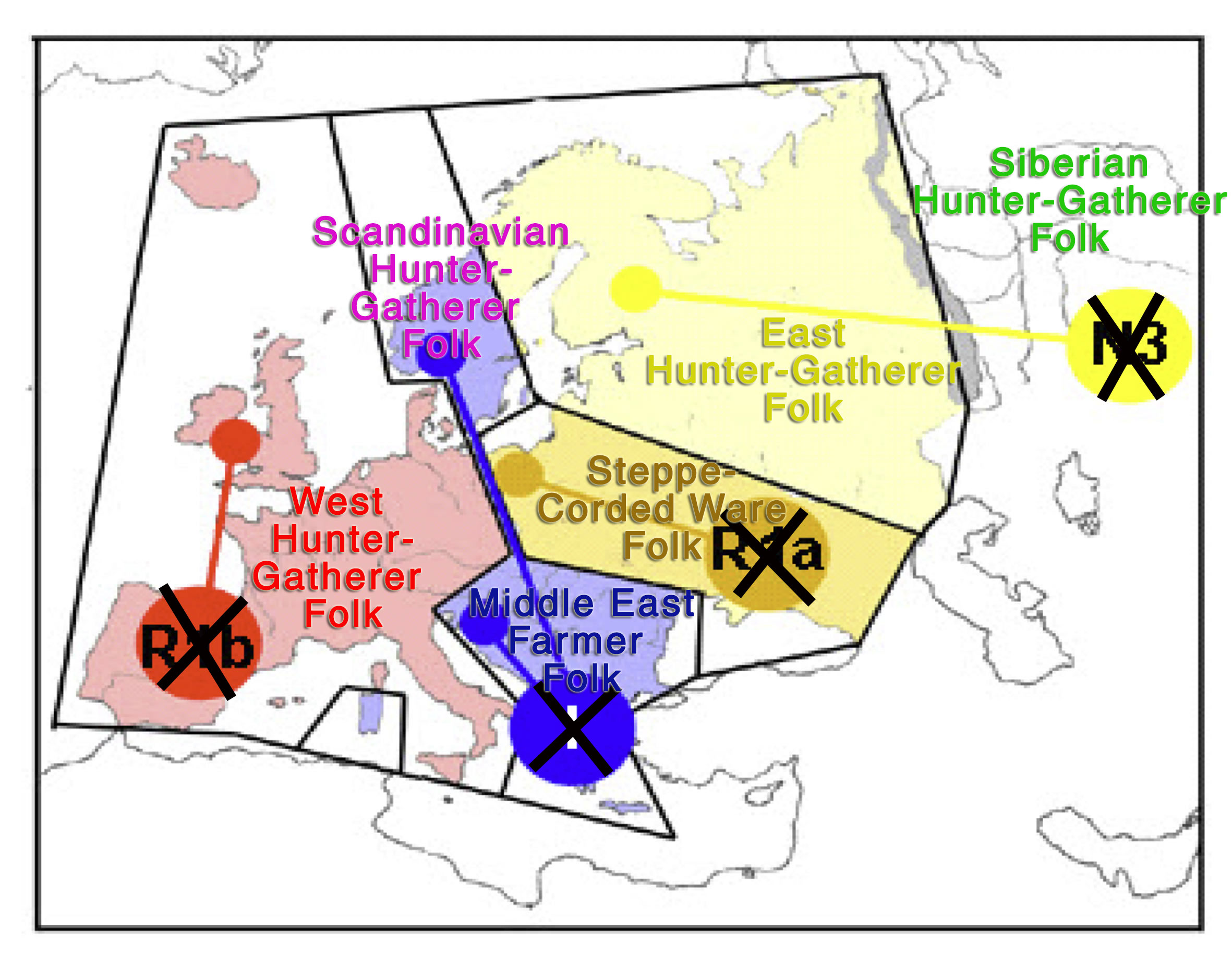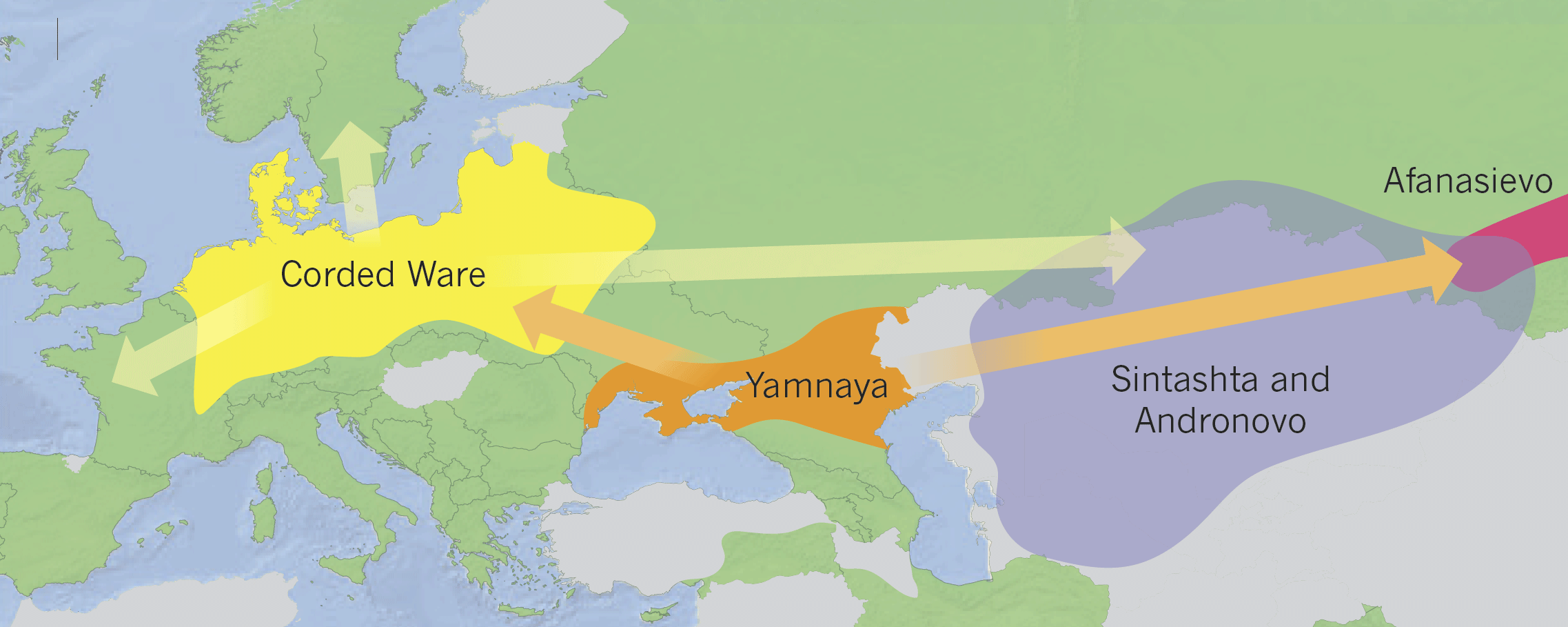You might expect some rambling about bad journalism here, but I don’t have time to read so much garbage to analyze them all. We have seen already what they did with the “blackness” or “whiteness” of the Cheddar Man: no paper published, just some informal data, but too much sensationalism already.
Some people who supported far-fetched theories on Indo-European migrations or common European haplogroups are today sharing some weeping and gnashing of teeth around forums and blogs – although, to be fair, neither Olalde et al. (2018) nor Mathieson et al. (2018) actually gave any surprising new data that you couldn’t infer before… People are nevertheless in the middle of the five stages of grief (for whatever expectations they had for new samples), and acceptance will surely take some time.
They will be confronted with two options:
- Keep fighting for what they believed, however wrong it turns out to be – after all, we still see all kinds of autochthonous continuists out there, no matter how much data there is against their views. People want to be supporters of a West European origin of R1b-M269 linked to Vasconic languages, fans of R1b-M269 continuity in Central Europe, Uralic speakers who believe in hidden N1c communities in Mesolithic or Neolithic Eastern Europe, fans of the OIT and Indian origins of R1a-M417…
- Just accept what seems now clear, change their model, and go on.

For me, the second option sounds quite simple, since whatever happens – markers of Indo-European migration being R1a or R1b, Corded Ware or Bell Beaker, or both – our group’s aim for the past 15 years or so is to support a North-West Indo-European proto-language, so any of the most reasonable anthropological models are a priori compatible with that. My model of Indo-European demic diffusion fits best the most recent proto-language guesstimates, though.
However, I understand that if I had been buying or selling dreams – and I mean literally buying or selling fantasies of whiteness and Europeanness (hidden behind an idealized concept of “Indo-European”, and ancestral components disguised as populations), beginning with the ‘R1a-M417/CWC’ and ‘Yamnaya ancestry’ craze of the 2015 papers – , and I realized data didn’t support that money exchange, I would be frustrated, too.
There is a funny mental process going on here for some of these people, as far as I could read today. Let me review some history of the Indo-European question here before getting to the point:
- Firstly linguists reconstructed (and are still doing it) Proto-Indo-European and other ancestral Indo-European proto-languages.
- Then archaeologists tried to identify certain ancestral cultures with these actual communities with help from linguistic guesstimates and dialectal classifications,
- using anthropological models of migration or cultural diffusion.
- Then genetic data came to support one of these alternative anthropological models, if possible.
Now some (amateur) geneticists are apparently disregarding what “Indo-European” means, and why Yamna was considered the best candidate for the expansion of Late Indo-European languages, and question the very sciences of Linguistics and Archaeology as unreliable, instead of questioning their own false assumptions and wrong interpretations from genetic papers.
Really? Genomics (especially ancestral components) now defines what an Indo-European population, culture, and language is? If that is not a fallacy of circular reasoning, I wonder what is.
The modified IECWT model
The surprise today came from the quick reaction of one member of the IECWT workgroup, Guus Kroonen, in his draft Comments to Olalde et al. 2018., The Beaker phenomenon and the genomic, transformation of northwest Europe, Nature.

He and – I can only guess – the whole IECWT workgroup finally rejected their characteristic Corded Ware -> Bell Beaker migration model – which they defended as “The steppe model” of Indo-European migration in Haak et al. 2015. They now defend a proposal similar to Anthony (2007).
Fan fact: Anthony changed his mind recently to partially support what Heyd said in 2007. While I did not dislike Anthony’s new model, I consider it wrong.
The Danish group – unsurprisingly – sticks nevertheless to the hypothesis of some kind of autochthonous Germanic in Scandinavia being defined by Corded Ware migrants and haplogroup R1a, and being somehow special and older among Proto-Indo-European dialects because of its non-Indo-European substrate – although in fact Kroonen’s original linguistic paper didn’t imply so.
While this new change of the workgroup’s model brings it closer to Heyd (2007), and parallels in that sense the adaptation process of Anthony (but always one step behind), what they are proposing right now seems not anymore a modified Kurgan model, as I described it: it is essentially The Kurgan model of Marija Gimbutas (1963), with Bell Beakers spreading a language ancestral to Italo-Celtic, and Corded Ware spreading some kind of mythical Germano-Balto-Slavic…
I find it odd that he would not cite Gimbutas, Heyd – as Anthony recently did – , or the most recent paper of Mallory on the language expanded with Bell Beakers, but just the workgroup’s papers and other old ones, to present this “new” theory.
However simple and (obviously) rapidly drafted it was, following the publications in Nature, it does not seem right: They were first, they were right, acknowledge them. Period.
It is interesting how the wrong interpretations of the ‘Yamnaya ancestral component’ (you know, that bulletproof “Yamna R1a-R1b community” and Yamna->Corded Ware migration that never happened) is affecting everyone involved in Indo-European studies.
Related:
- Olalde et al. and Mathieson et al. (Nature 2018): R1b-L23 dominates Bell Beaker and Yamna, R1a-M417 resurges in East-Central Europe during the Bronze Age
- Indo-European demic diffusion model, 3rd edition (revised October 2017)
- The Indo-European demic diffusion model, and the “R1b – Indo-European” association
- The concept of “Outlier” in Human Ancestry (III): Late Neolithic samples from the Baltic region and origins of the Corded Ware culture
- The renewed ‘Kurgan model’ of Kristian Kristiansen and the Danish school: “The Indo-European Corded Ware Theory”
- Correlation does not mean causation: the damage of the ‘Yamnaya ancestral component’, and the ‘Future America’ hypothesis
- New Ukraine Eneolithic sample from late Sredni Stog, near homeland of the Corded Ware culture
- Something is very wrong with models based on the so-called ‘Yamnaya admixture’ – and archaeologists are catching up (II)
- Germanic–Balto-Slavic and Satem (‘Indo-Slavonic’) dialect revisionism by amateur geneticists, or why R1a lineages *must* have spoken Proto-Indo-European